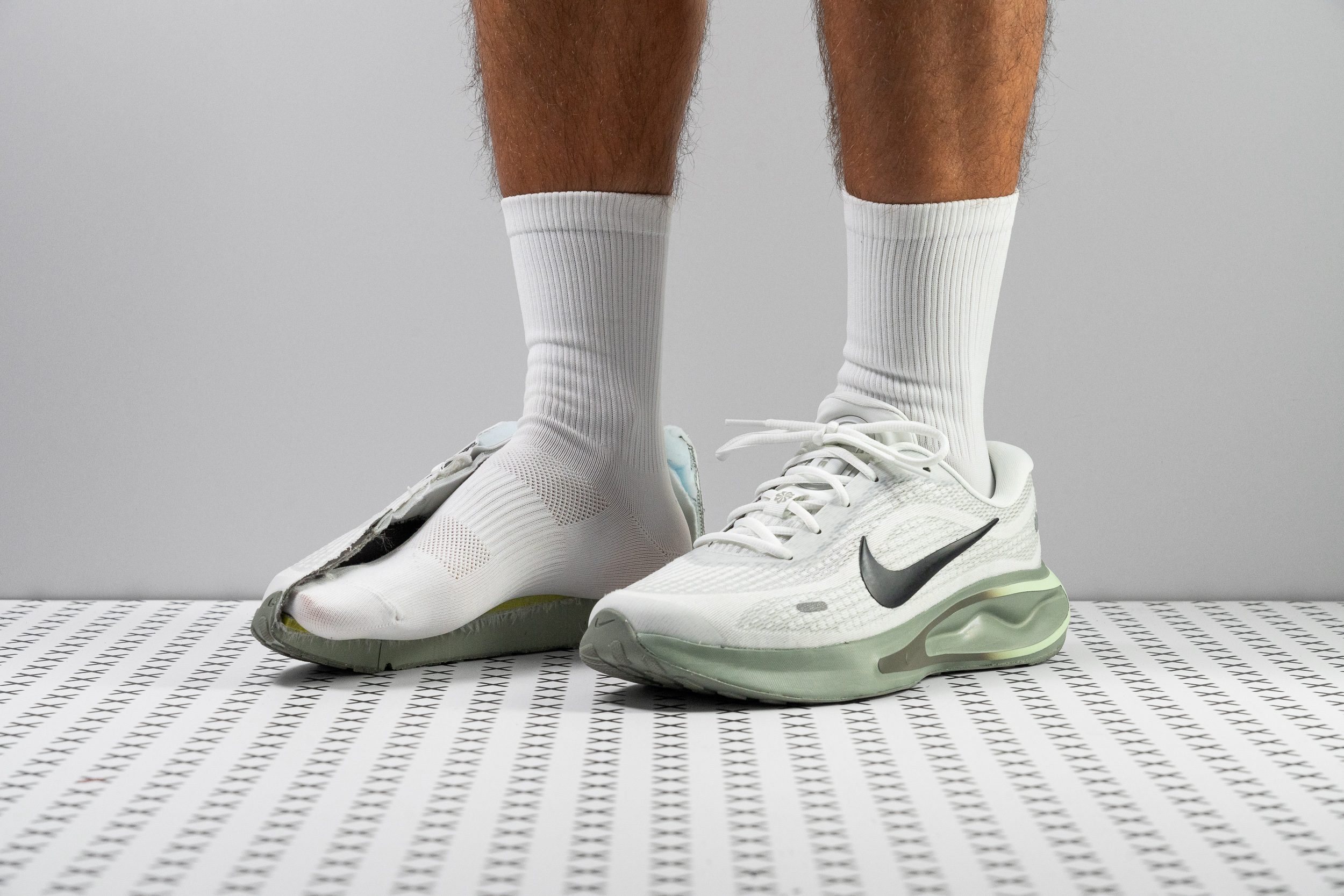Our verdict
- Top pick in best cheap Nike running shoes
Pros
- High-quality upper
- Exceptional value
- Rock-solid stability
- Perfect for new runners
- Feels lighter than it seems
- Doubles as an everyday shoe
- Reliable lockdown with gusseted tongue
- Good breathability
Cons
- Minimal energy return
- Not as soft as marketed
- Not roomy at all
Audience verdict
- Top 27% most popular running shoes
Comparison
The most similar running shoes compared
+ + Add a shoe | |||||
|---|---|---|---|---|---|
| Audience score | 81 Good! | 79 Good! | 86 Good! | 81 Good! | |
| Price | $90 | $70 | $160 | $75 | |
| Pace | Daily running | Daily running | Daily running | Daily running | |
| Shock absorption | Low | Moderate | - | Low | |
| Energy return | Low | Low | - | Low | |
| Traction | Moderate | Moderate | - | Moderate | |
| Arch support | Neutral | Neutral | Neutral | Neutral | |
| Weight lab Weight brand | 10.5 oz / 298g 10.8 oz / 305g | 9.7 oz / 275g 9.7 oz / 275g | 10.3 oz / 293g 10.6 oz / 300.5g | 10.5 oz / 298g 9.9 oz / 280g | |
| Drop lab Drop brand | 8.6 mm 10.0 mm | 7.8 mm 8.0 mm | 8.1 mm 8.5 mm | 9.4 mm 10.0 mm | |
| Strike pattern | HeelMid/forefoot | Mid/forefoot | HeelMid/forefoot | HeelMid/forefoot | |
| Size | True to size | True to size | True to size | Slightly small | |
| Midsole softness | Balanced | Balanced | Balanced | Firm | |
| Difference in midsole softness in cold | Big | Small | Small | Small | |
| Toebox durability | Decent | Bad | Good | Bad | |
| Heel padding durability | Decent | Good | Decent | Bad | |
| Outsole durability | Decent | Decent | Good | - | |
| Breathability | Moderate | Moderate | Moderate | Moderate | |
| Width / fit | Medium | Medium | Medium | Medium | |
| Toebox width | Narrow | Medium | Medium | Medium | |
| Stiffness | Moderate | Moderate | Stiff | Moderate | |
| Torsional rigidity | Stiff | Moderate | Stiff | Moderate | |
| Heel counter stiffness | Stiff | Stiff | Moderate | Moderate | |
| Heel lab Heel brand | 33.0 mm 34.0 mm | 31.2 mm 31.0 mm | 32.1 mm 30.5 mm | 32.0 mm | |
| Forefoot lab Forefoot brand | 24.4 mm 24.0 mm | 23.4 mm 23.0 mm | 24.0 mm 22.0 mm | 22.6 mm | |
| Widths available | Normal | NormalWideX-Wide | Normal | NormalWideX-Wide | |
| Orthotic friendly | ✓ | ✓ | ✓ | ✓ | |
| Season | All seasons | All seasons | All seasons | All seasons | |
| Removable insole | ✓ | ✓ | ✓ | ✓ | |
| Ranking | #304 Bottom 18% | #324 Bottom 13% | #193 Bottom 48% | #291 Bottom 22% | |
| Popularity | #101 Top 27% | #78 Top 21% | #323 Bottom 13% | #106 Top 29% |
Who should buy
We’ve thoroughly tested the Nike Journey Run and think it’s an ideal choice for:
- Beginners seeking a stylish, versatile shoe for casual runs that can also handle everyday activities.
- Those looking for a cost-effective daily trainer offering excellent value.
- Runners who appreciate a high-quality upper without overspending—this is one of the best we’ve seen in a wallet-friendly shoe.
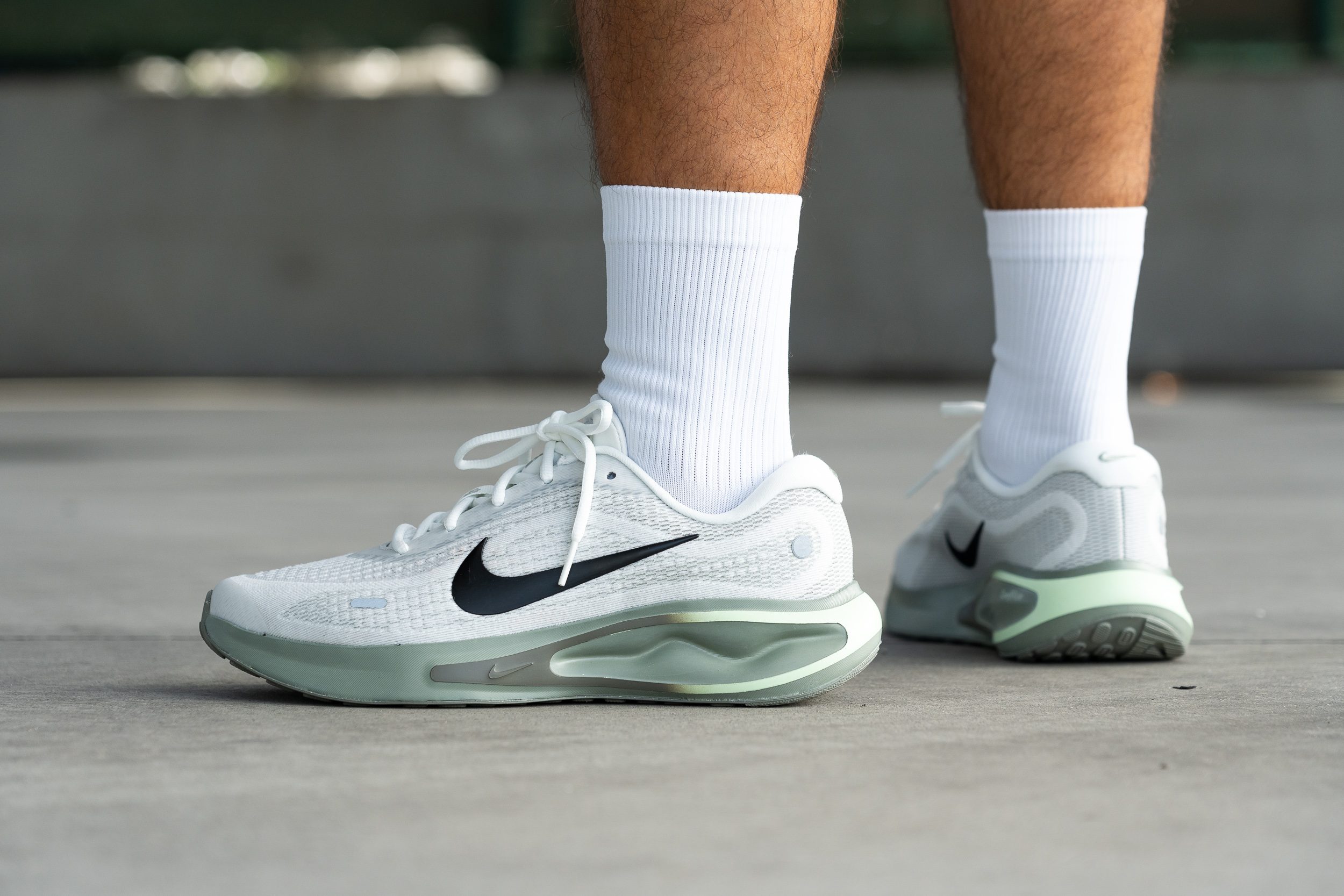
Who should NOT buy
We found that the ComfiRide midsole in the Journey Run unfortunately doesn’t live up to Nike’s claims of plushness and bounce. Instead, it leans toward the firmer side, far from the soft experience you’d find in models like the Nike Invincible 3 or New Balance FuelCell Rebel v4. However, if you're seeking a genuinely plush ride, spending a bit more might be necessary.
Additionally, the Journey Run’s tapered toebox could be problematic for those with wider feet. In our view, if toe room is a priority, options like the ASICS Gel Contend 9 or the Saucony Axon 3 provide better comfort, delivering a great upper and value without compromising fit.
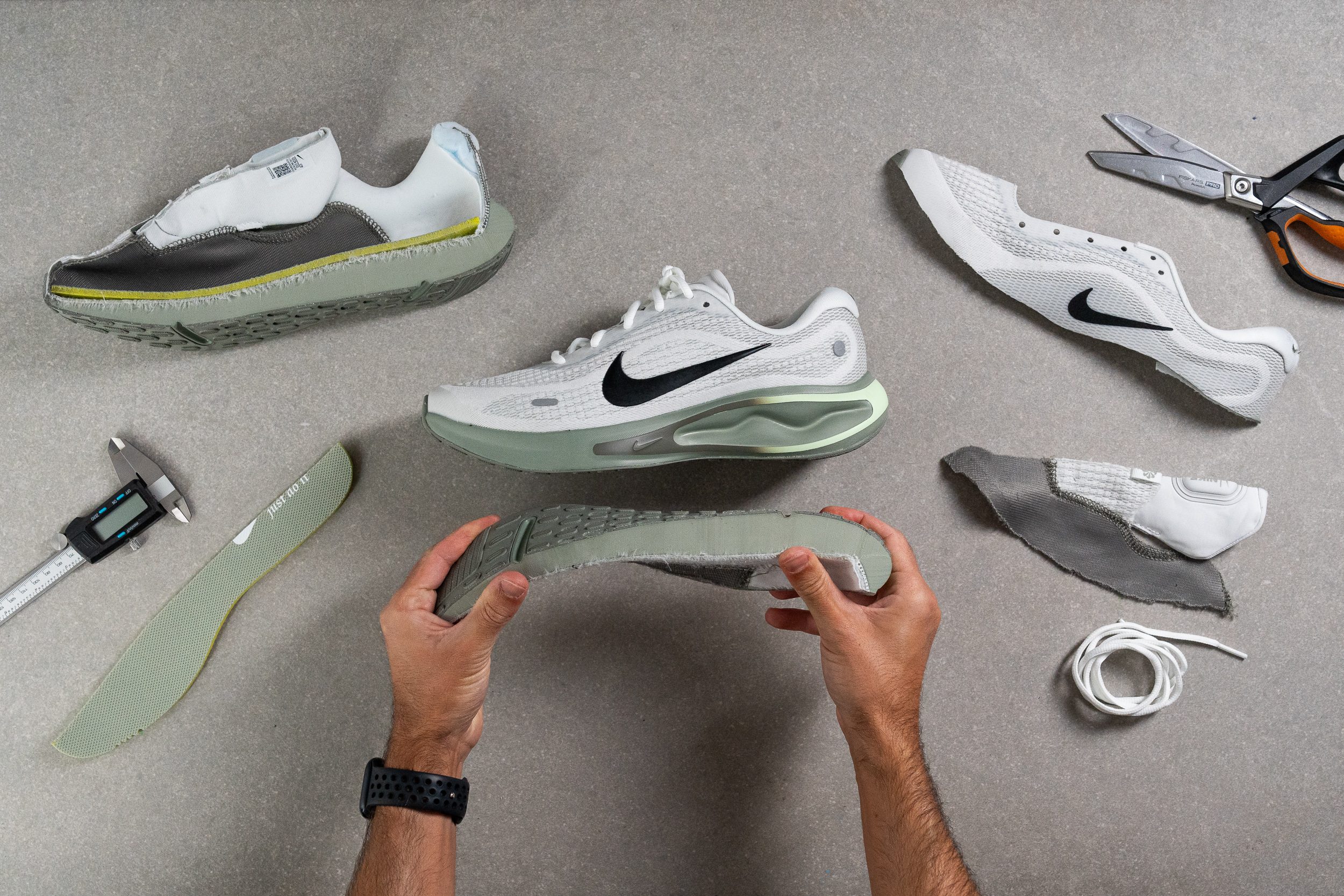
Cushioning
Shock absorption
The Nike Journey Run uses ComfiRide foam, but the ride feels more like a low-cushion daily trainer than a plush one. We measured just 107 SA in the heel and 94 SA in the forefoot, which we think it's just enough for short, under-1-hour sessions.
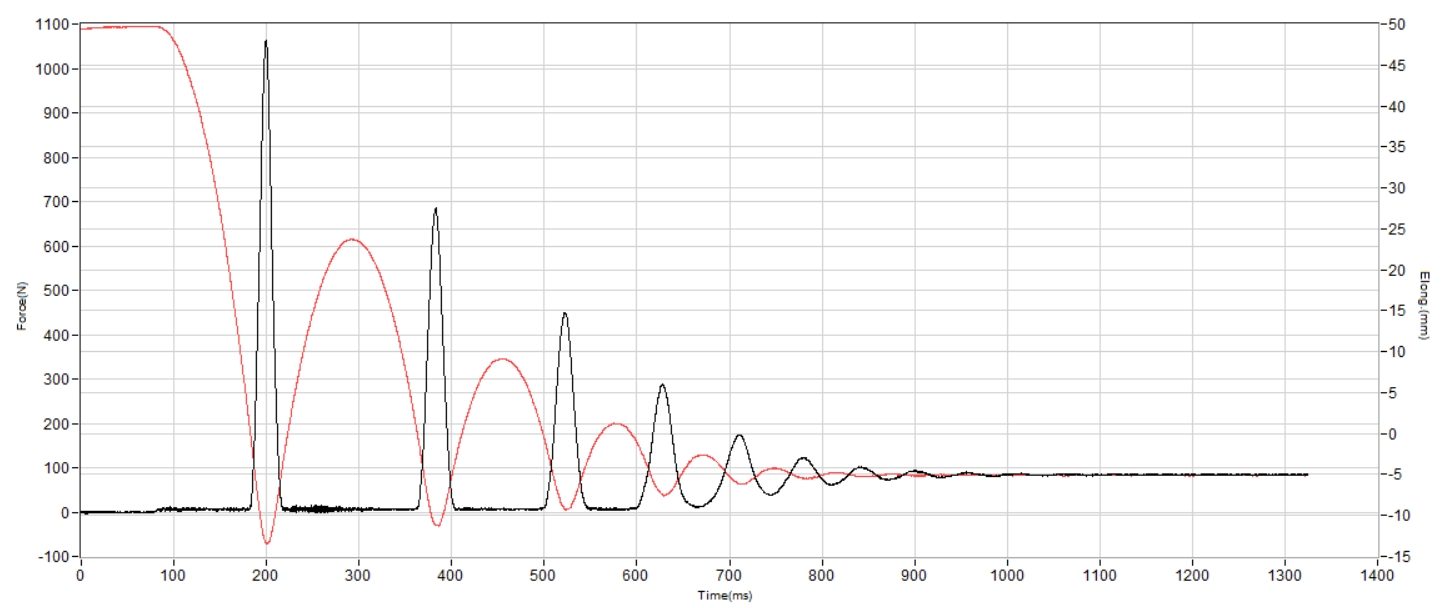
| Journey Run | 107 SA |
| Average | 129 SA |
Energy return
Energy return is decent at 54.7%, but nothing extraordinary. It feels okay for daily runs, but once you try to pick up the pace, the ride turns flat and not particularly enjoyable.
| Journey Run | 54.7% |
| Average | 58.5% |
Heel stack
We found that the Journey Run offers an average level of cushioning, perfectly suitable for a daily trainer. In our measurements, the heel stack came in at 33.0 mm.
From our perspective, this cushion height complements the shoe’s versatility, making it nimble enough for easy and moderate paces.
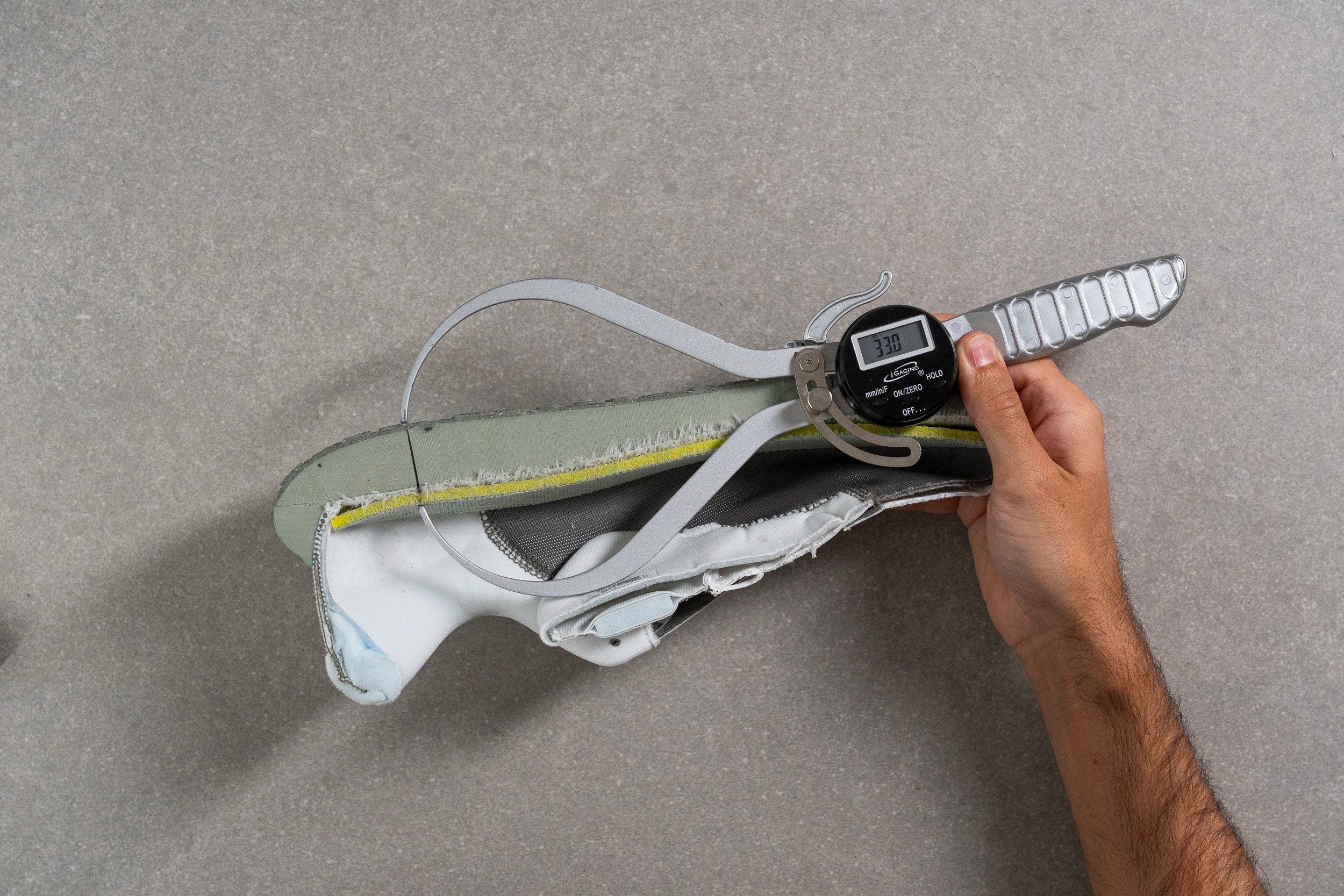
| Journey Run | 33.0 mm |
| Average | 34.8 mm |
Forefoot stack
In the forefoot, we measured 24.4 mm with our digital calipers, revealing again fairly average design. Short and easy runs are fine, but while the shoe can handle occasional long runs, we believe that spending a bit more is mandatory for that purpose.
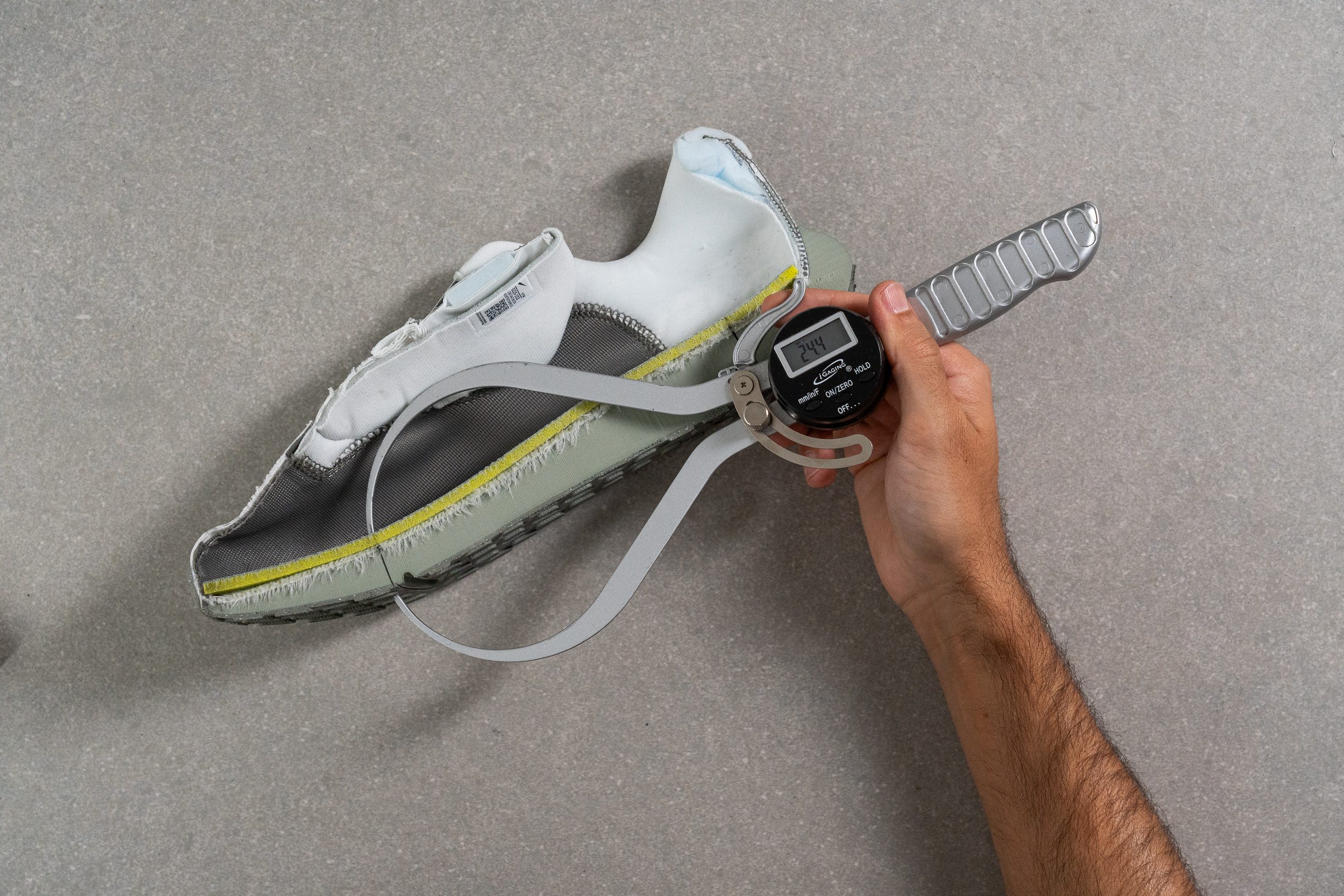
| Journey Run | 24.4 mm |
| Average | 26.2 mm |
Drop
The 8.6-mm drop is nothing unusual, featuring the typical medium-to-high offset found in most affordable daily trainers, usually ranging between 8 and 12 mm. This makes it a solid choice for beginners, who tend to strike more with their heels.
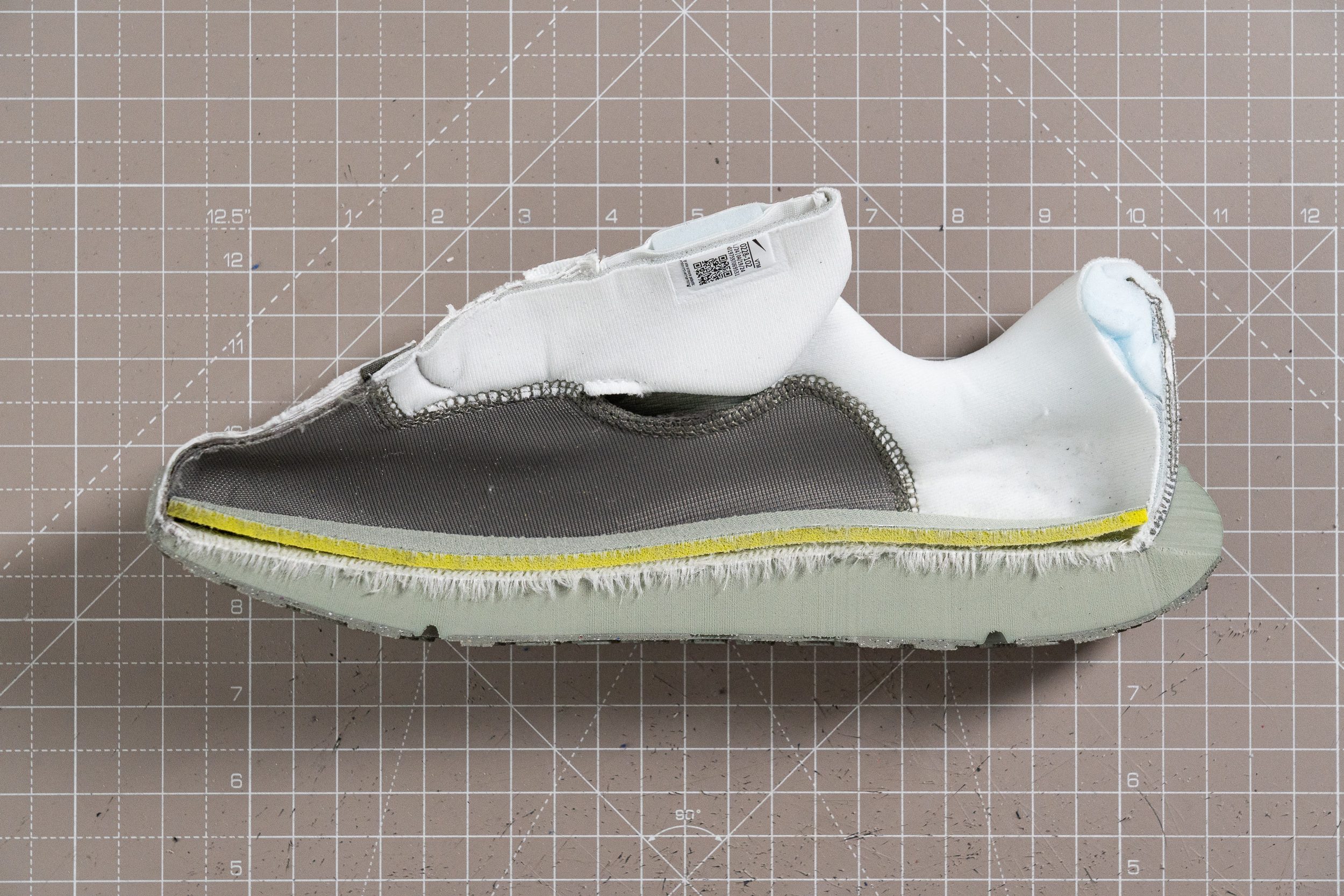
| Journey Run | 8.6 mm |
| Average | 8.6 mm |
Midsole softness
Not only does it feel firmer than expected, but our durometer measured 23.5 HA, which isn’t even softer than average. So, if you’re looking for the plush shoe Nike claims, we believe this isn’t it.
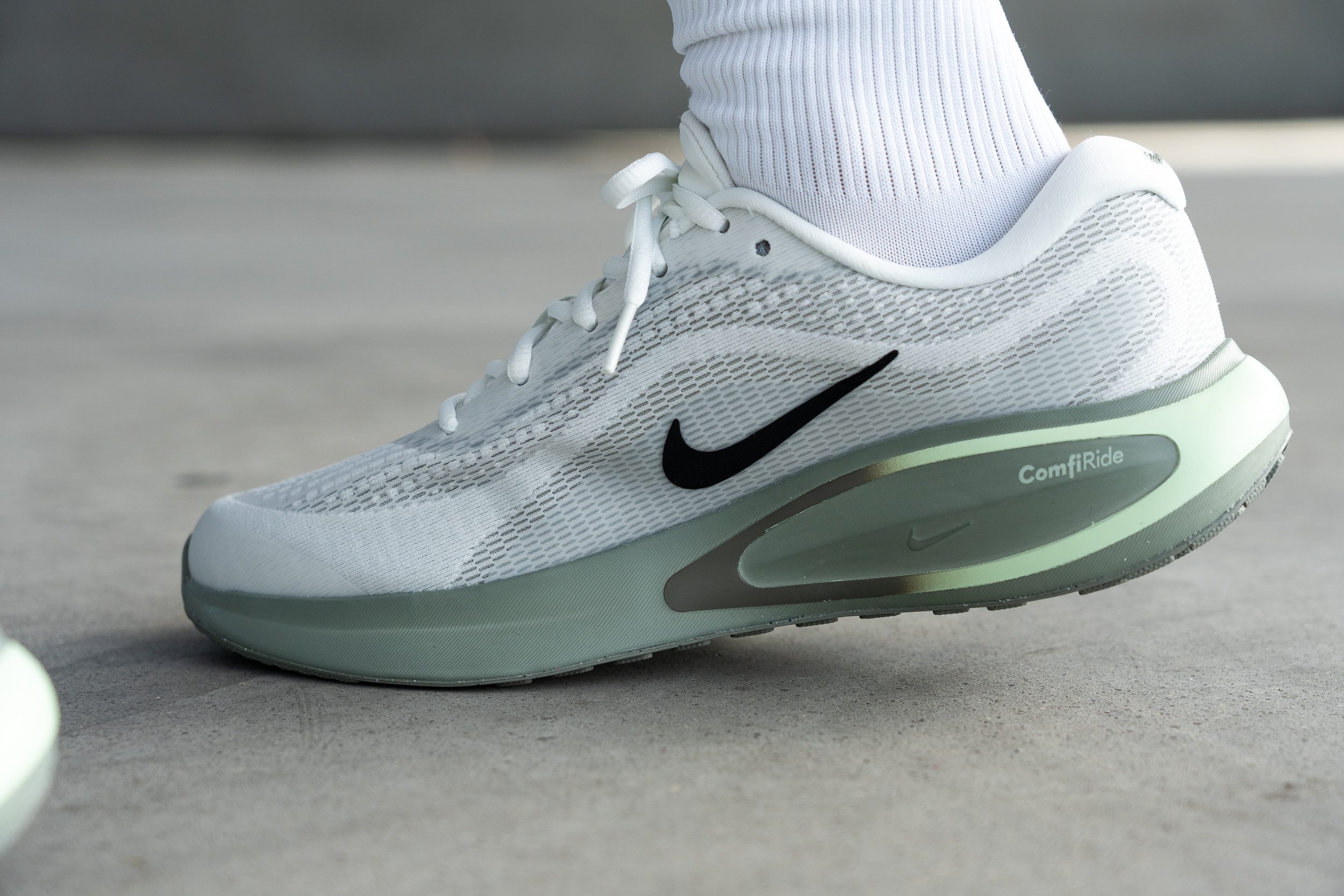
In fact, Nike molded the midsole specifically to aid compression in the heel—something completely unnecessary in a «super-soft» midsole.
As for the foam, this model doesn’t use Nike’s usual budget-friendly materials like Cushlon or SR-02. Instead, it features ComfiRide, a new foam that we think Nike will start using in more affordable models. In our experience, it delivers a decent ride for its price—just don’t expect it to be plush!

| Journey Run | 23.5 HA |
| Average | 20.4 HA |
Rocker
With its moderate stack height, we believe a pronounced rocker shape or a prominent toe spring wasn’t necessary for this model. It seems Nike shared the same thought, as the Journey Run features a mostly flat profile.
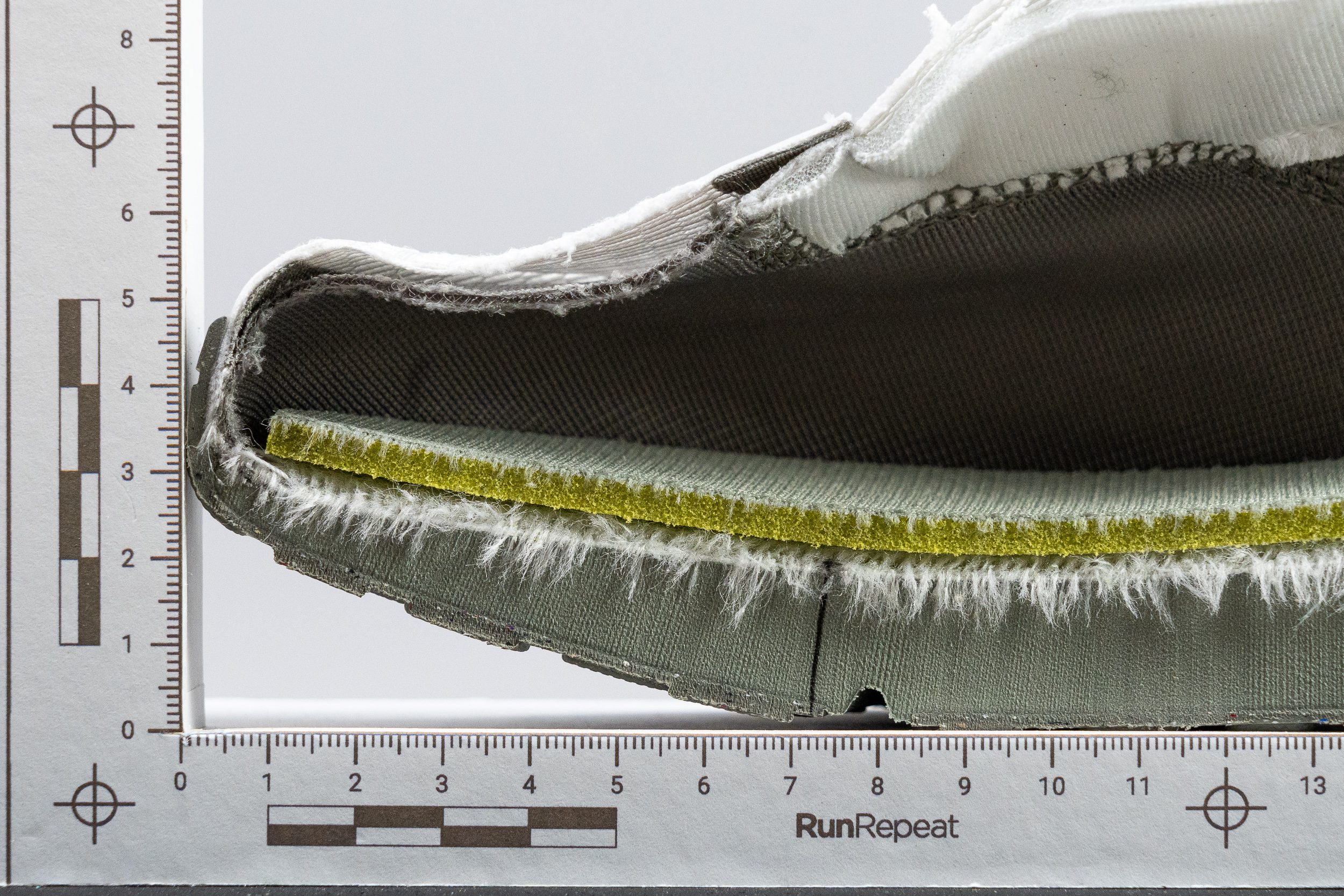
However, we found a slight curve in the heel, which adds a touch of ease for heel strikers.
Size and fit
Size
Nike Journey Run fits true to size (86 votes).
Width / Fit
Nike has been making snug-fitting shoes for decades, but recent models are shifting toward a more generous fit. And that's great.
The Journey Run partially exemplifies this change, with 96.3 mm at its widest point. However, there's a catch...
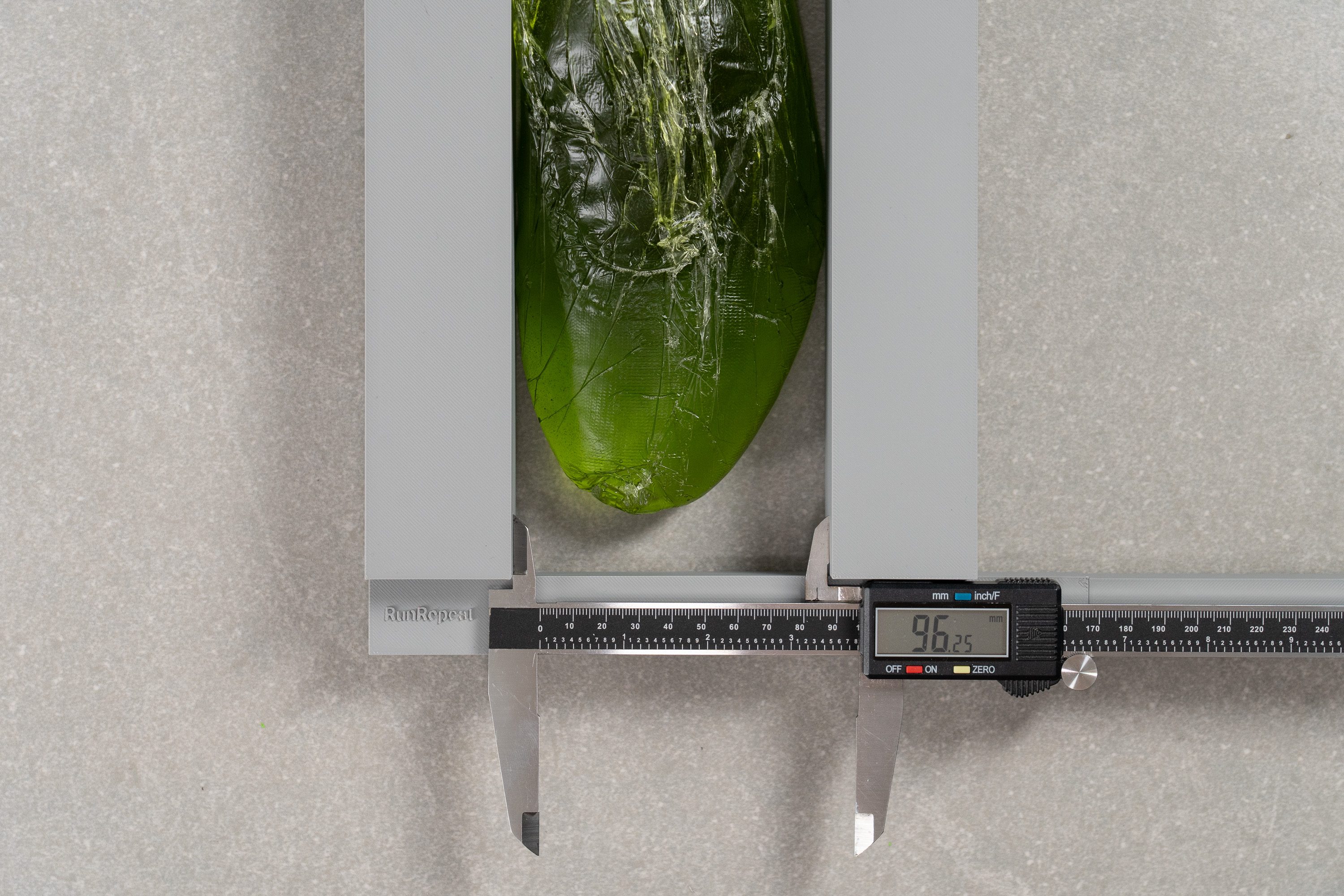
| Journey Run | 96.3 mm |
| Average | 95.1 mm |
Toebox width
Measuring just 69.8 mm, the toebox features a sharply tapered design, straying as far as possible from a foot-shaped design.
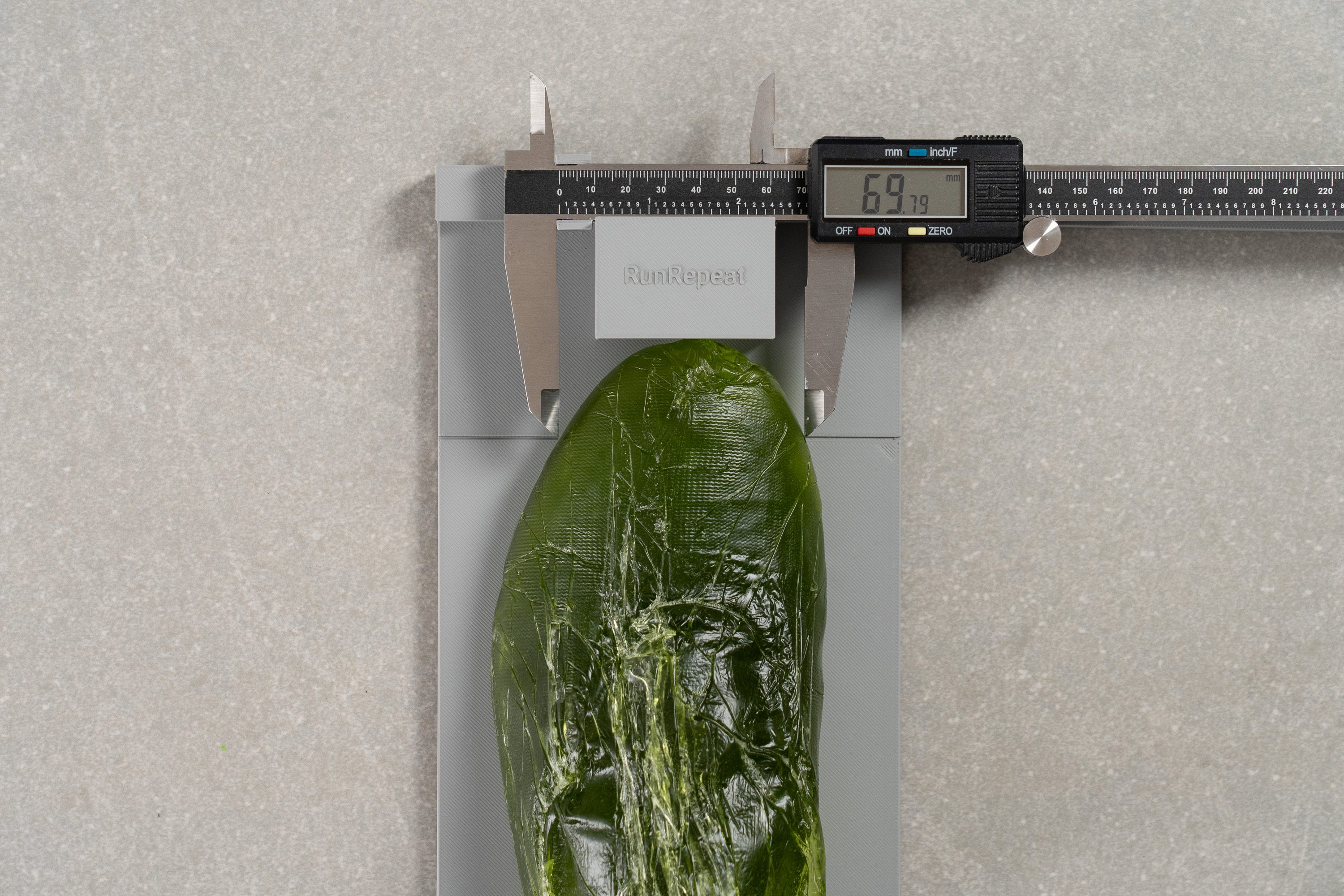
| Journey Run | 69.8 mm |
| Average | 73.2 mm |
Toebox height
Height-wise, the upper is quite restrictive too, measuring only 25.0 mm based on our caliper reading.
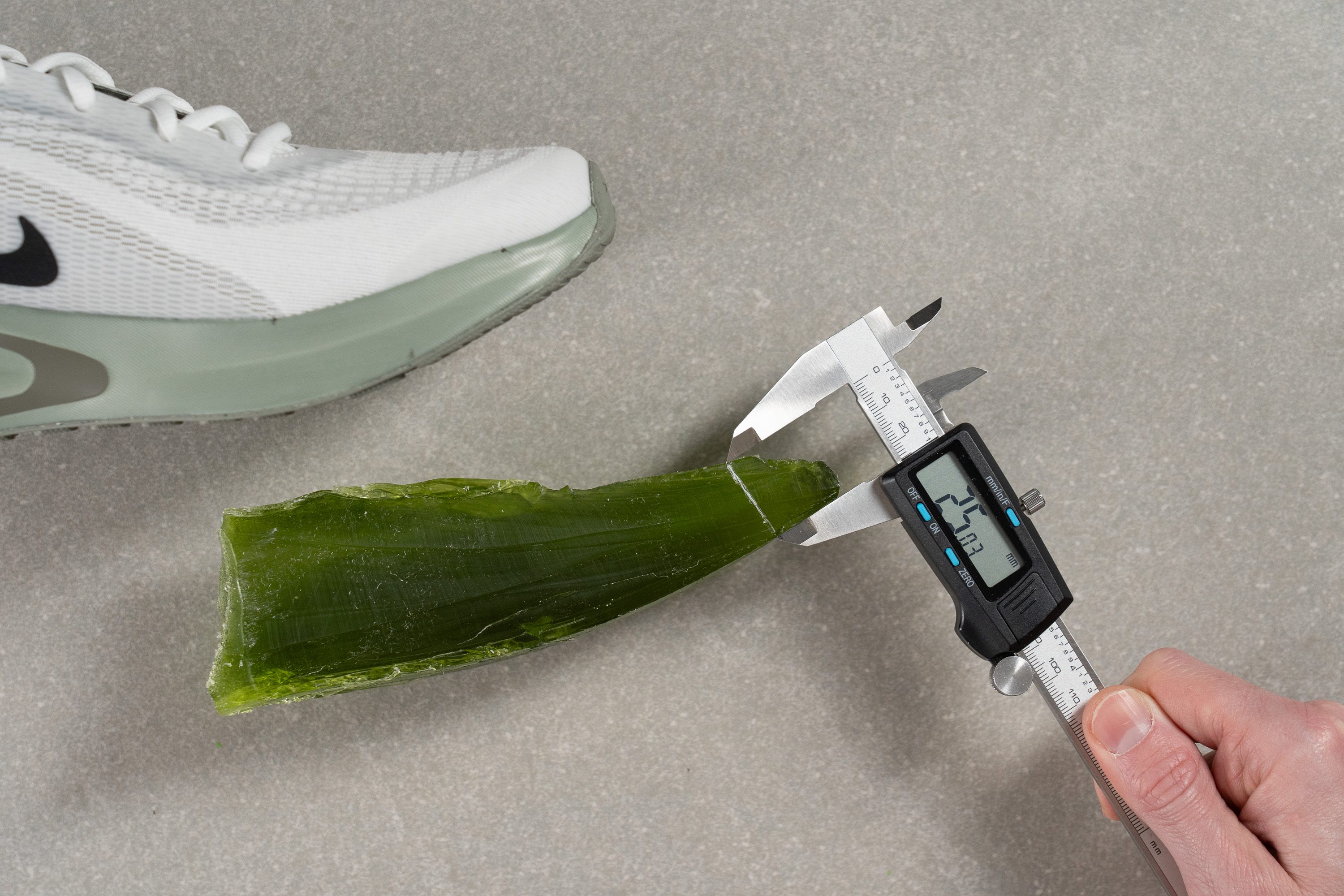
| Journey Run | 25.0 mm |
| Average | 27.1 mm |
Traction / Grip
Traction test
The Journey Run stands out for its wallet-friendly price, which is clear in some of its basic materials. We tested the outsole and found a 0.38 score—falling below the pack of high-end shoes, but still offering dependable grip for regular runs and even during light showers.
| Journey Run | 0.38 |
| Average | 0.48 |
Outsole design
The outsole takes cues from recent Nike designs, sporting full-length rubber coverage—which is not very common nowadays. It also features two horizontal grooves in the forefoot and heel, aimed at improving flexibility.
Flexibility / Stiffness
After observing the sky-high torsional rigidity of this shoe, we initially feared a high score in this test. It could have been a disaster for comfort, especially since budget-friendly daily trainers are often used for walking too.
Fortunately, after pushing the shoe to 30 degrees, we measured 15.3N and felt relieved. That clever forefoot cutout in the outsole really did its job to keep it in the same ballpark as most daily trainers.
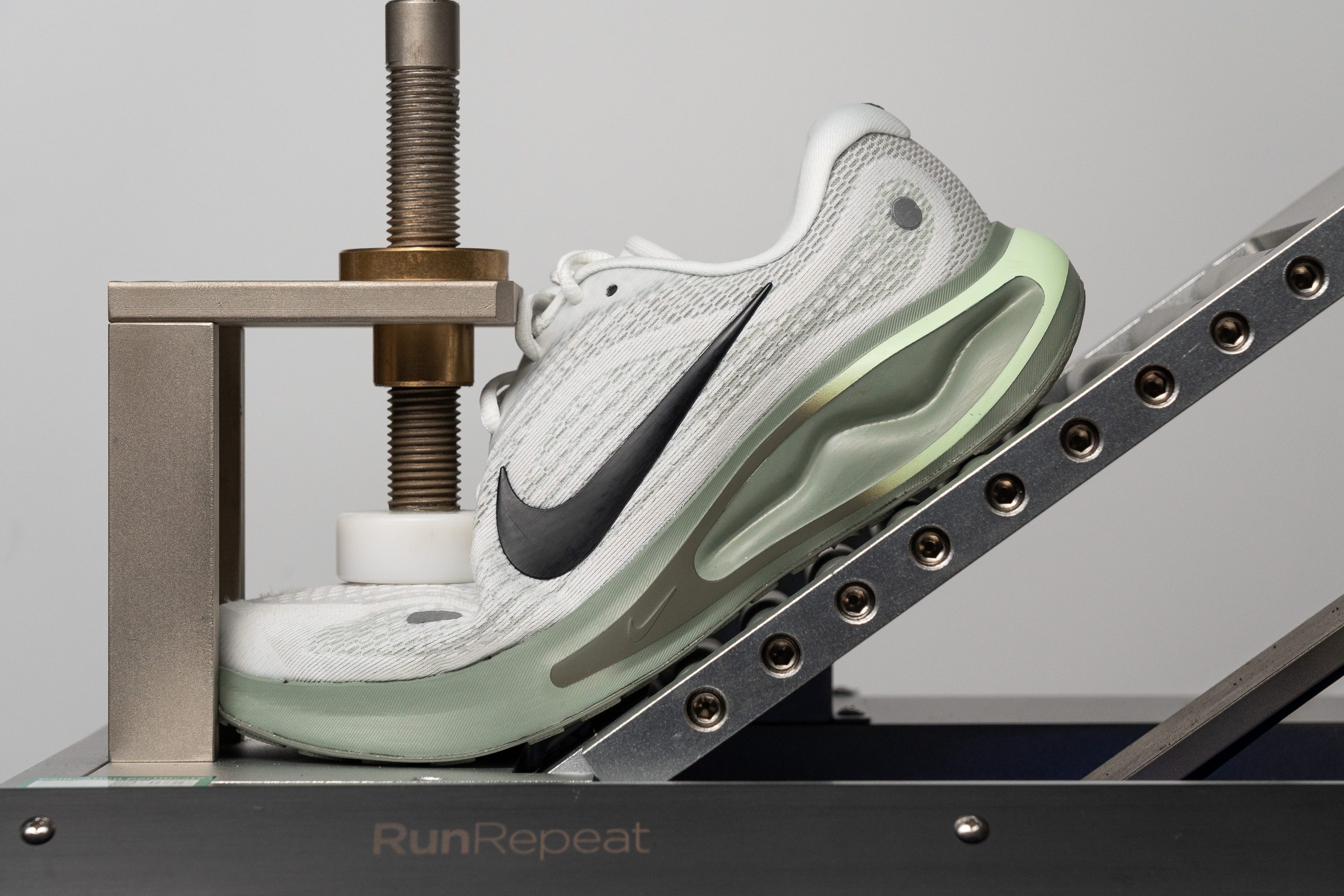
| Journey Run | 15.3N |
| Average | 15.3N |
Weight
We anticipated this shoe would be heavier, but it pleasantly surprised us.
While at 10.5 oz (298g) it does surpass 10 oz and is heavier than average, it’s actually reasonable considering the plush upper and full rubber coverage on the outsole.
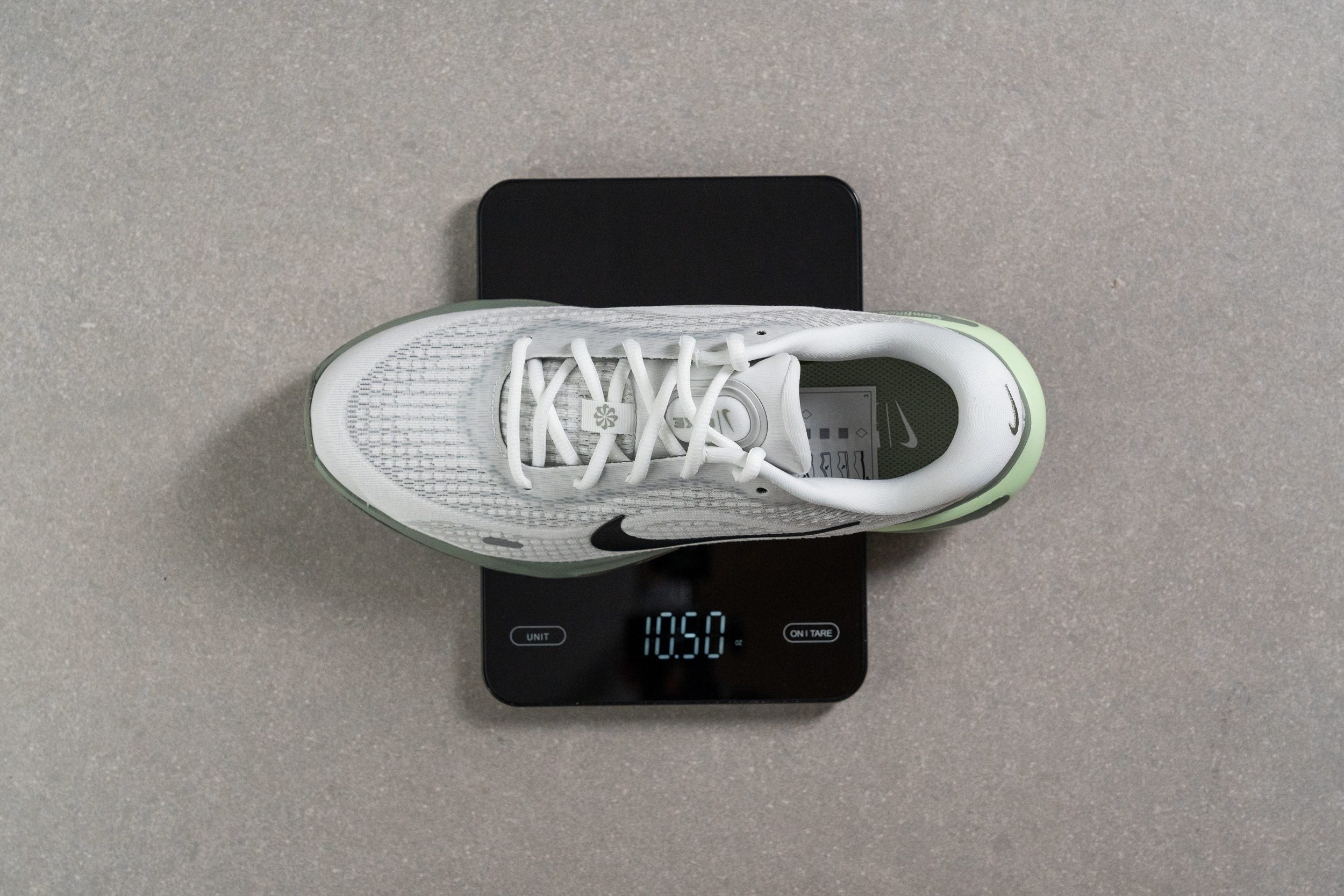
| Journey Run | 10.5 oz (298g) |
| Average | 9.3 oz (264g) |
Breathability
Nike markets the Journey Run as an entry-level shoe for beginners and those with budget constraints, which often implies a low-quality, poorly-ventilated upper. But that’s not what we found!
After using our smoke machine, we settled on a solid 4/5 in this test—something many pricier shoes fail to achieve. We believe this ensures good ventilation in the toebox year round.
To check if the ventilation in the toebox extends to the rest of the shoe, we tested it with a light. Unfortunately, Nike seems to have prioritized durability and stability, creating thick medial and lateral sides on the upper.
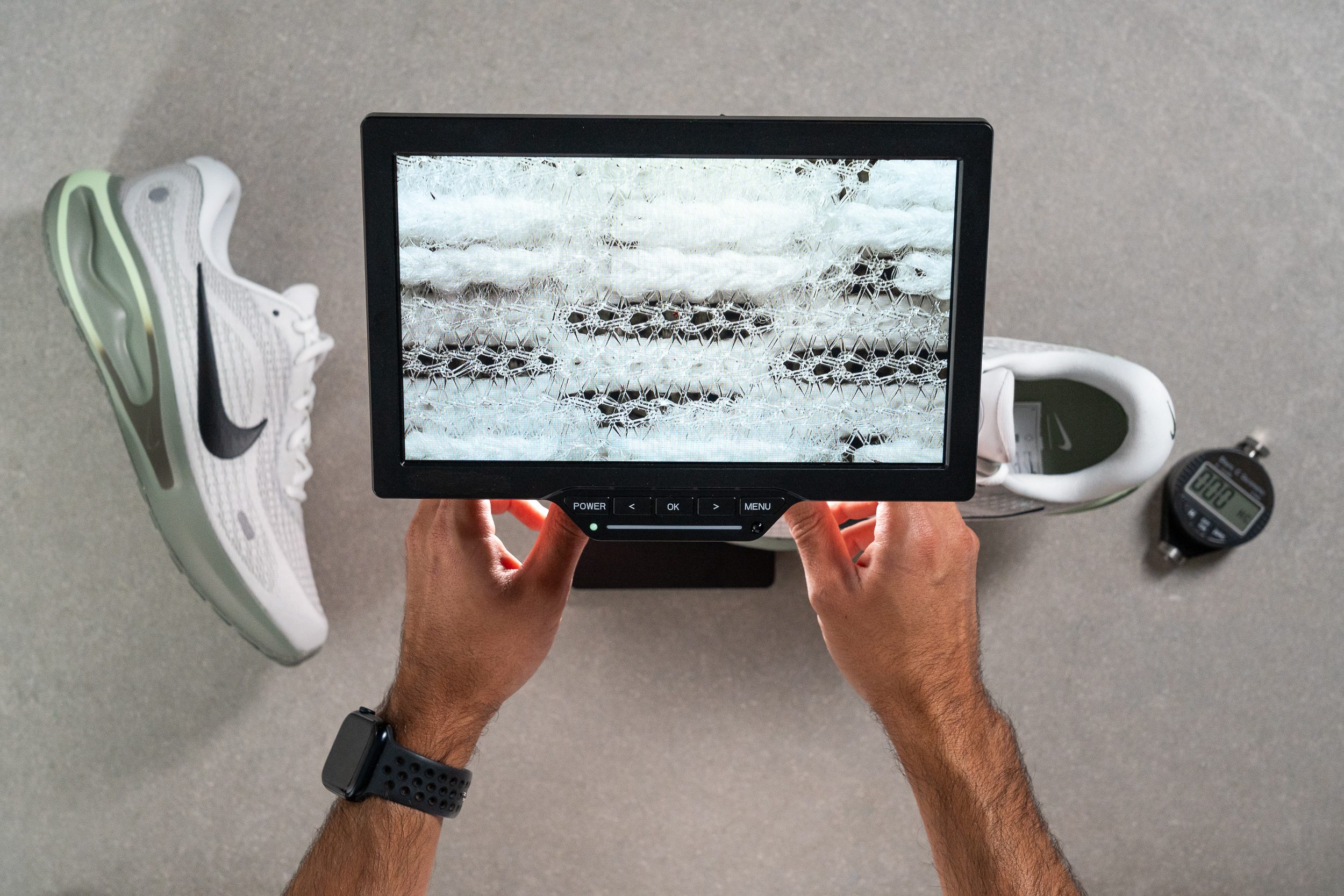
Once we completed our first two tests, we moved to the microscope.
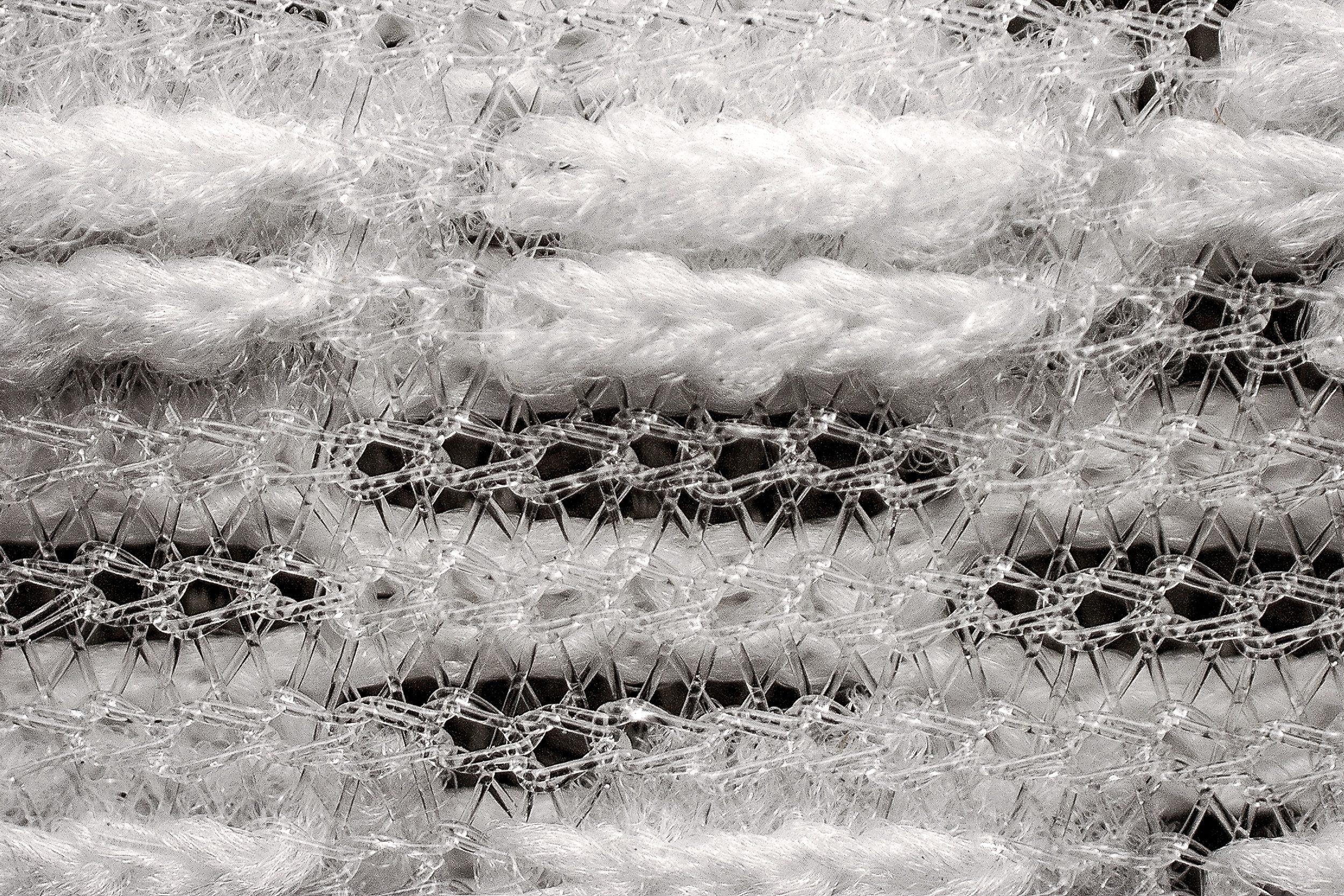
Here, we discovered the upper’s real magic—it blends thicker sections with well-placed ventilation holes. In our experience, finding such an engineered mesh at this price point is quite rare.
Another standout feature of this upper is its plushness. We expected padding in the back, but comfort is present from heel to toe. However, we suspect this level of cushioning might come with a few trade-offs.
| Journey Run | 4 |
| Average | 3.7 |
Stability
Lateral stability test
The Journey Run may not look ultra-stable, but that’s not what we found during our testing. Despite being a neutral running shoe, it incorporates design features from stability shoes, like high torsional rigidity and a stiff heel counter.
In our experience, these elements provide extra support. For this reason, we believe runners with low-to-moderate stability needs can also enjoy this shoe.
Torsional rigidity
Diving deeper into the details, we began with a manual assessment of torsional rigidity, which left us surprised. We didn’t expect to find a shoe this stiff—comparable to carbon-plated racers like the Nike Vaporfly 3!
As you might guess, this enhances stability but takes away some comfort during the ride.
| Journey Run | 5 |
| Average | 3.5 |
Heel counter stiffness
The heel counter closely resembles those found in stability shoes, earning a solid 4/5 in our test.
Is this too high? In our experience, it could be, especially for runners with sensitive heels that might find the Journey Run uncomfortable, as it could become bothersome during longer runs.
| Journey Run | 4 |
| Average | 2.9 |
Midsole width - forefoot
While the previous two tests revealed results uncommon in budget-friendly daily trainers, the midsole dimensions bring us back to more average findings.
In the forefoot, we measured 117.0 mm, which is a fairly typical outcome for a shoe of this type.
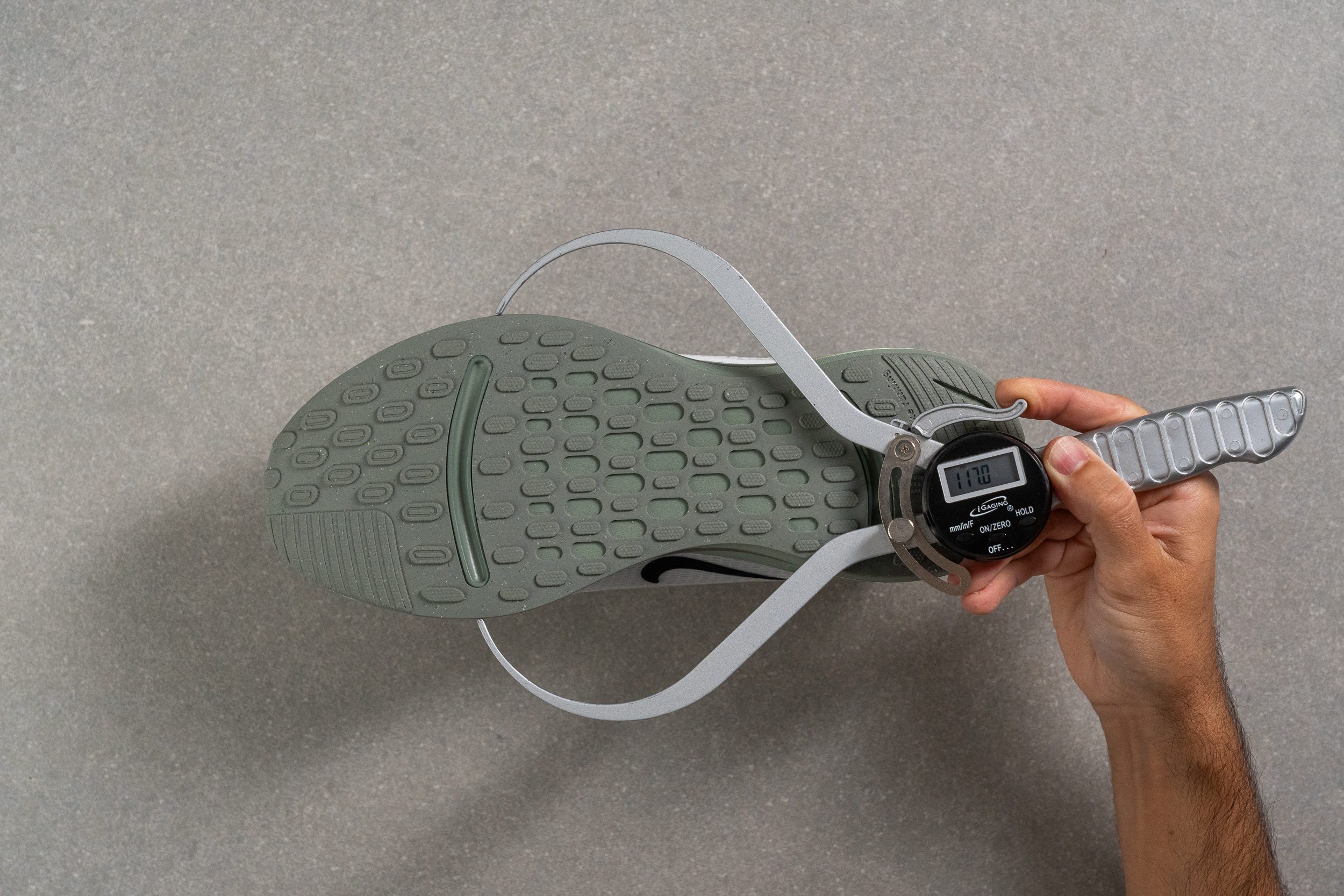
| Journey Run | 117.0 mm |
| Average | 114.4 mm |
Midsole width - heel
Our second measurement of the midsole revealed a heel width of 91.5 mm, which aligns well with its competitors. We found this width provides a solid and stable landing platform for neutral heel strikers.
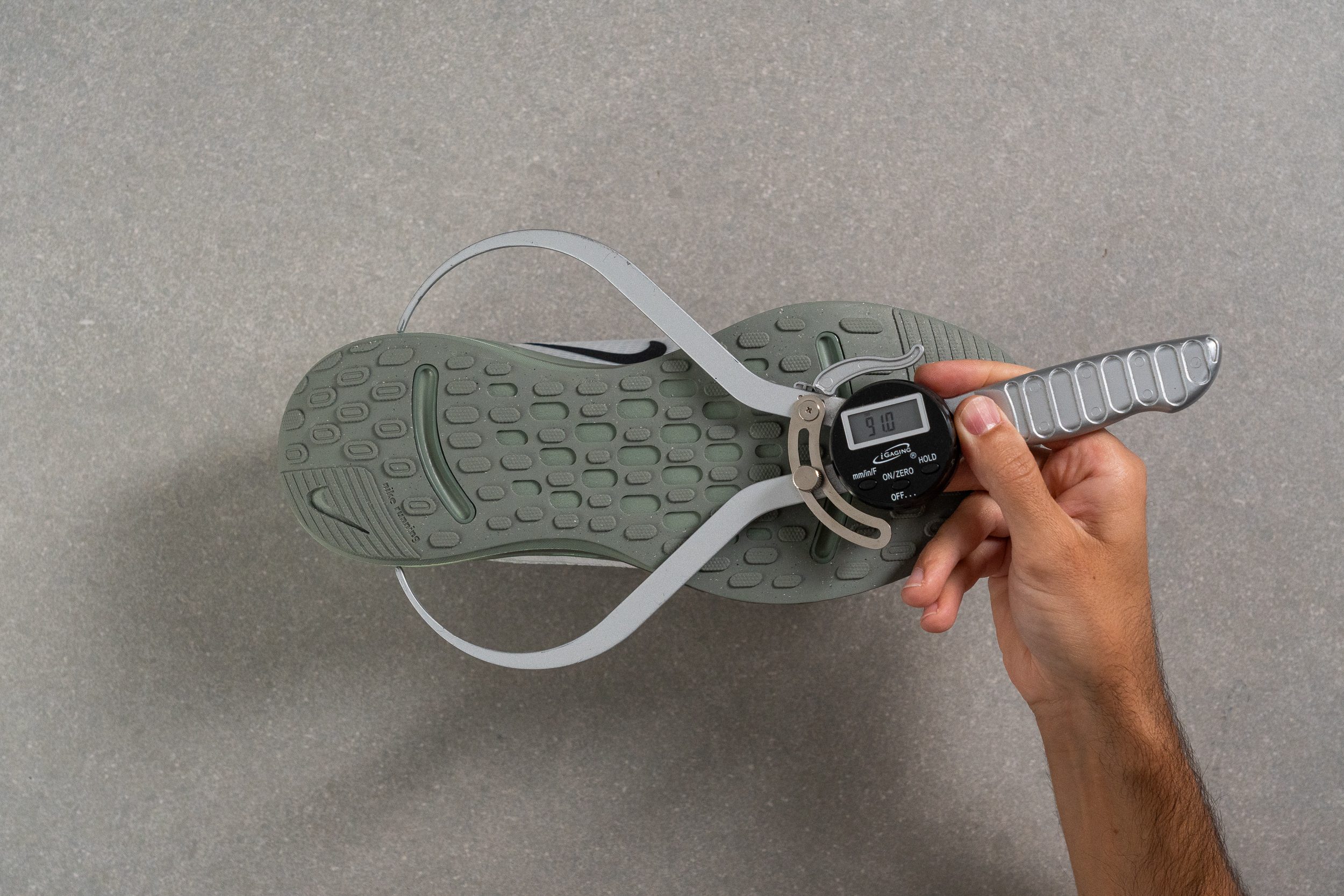
| Journey Run | 91.0 mm |
| Average | 90.7 mm |
Durability
Toebox durability
In terms of durability, the toebox performs well, especially considering the large ventilation holes.
We tested it using our Dremel, set to 3.2N of force and 5,000 RPM. The result wasn’t bad at all—the Journey Run handled this rigorous challenge, earning a solid 3-out-of-5 score.
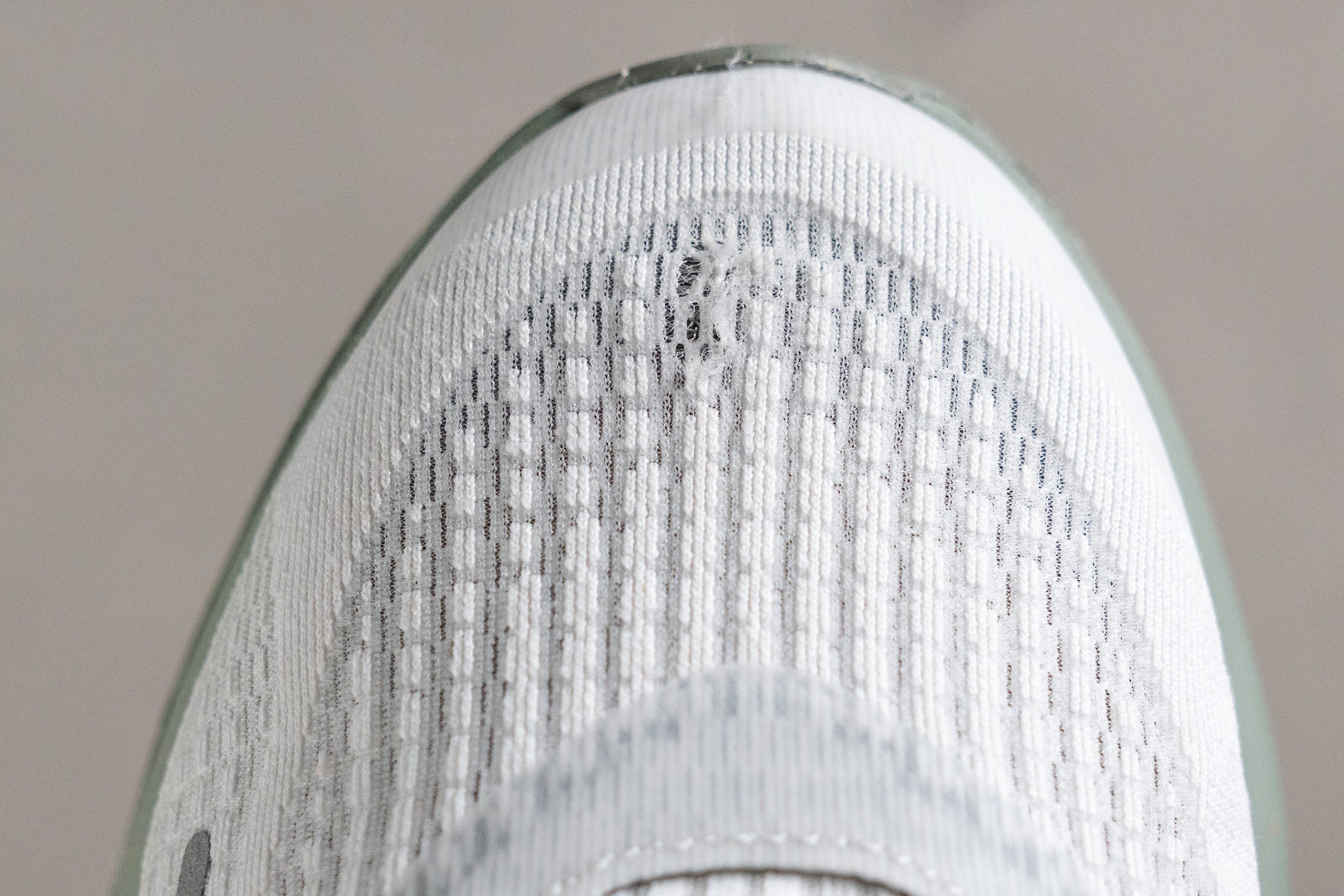
| Journey Run | 3 |
| Average | 2.6 |
Heel padding durability
We mentioned earlier that we suspected trade-offs from the padded and comfy upper, specifically regarding durability and weight. And here’s what we found.
After running the Dremel test, the upper scored another 3/5. This result is more disappointing because most running shoes tend to perform better in this area than in the toebox.

| Journey Run | 3 |
| Average | 3.4 |
Outsole durability
After completing our final Dremel test, we understood why Nike chose such hard rubber.
The 1.1 mm dent we measured with our tire tread gauge—the mini lug was almost erased—showed that using softer rubber would have severely impacted durability. No one wants a budget-friendly shoe that wears out quickly!
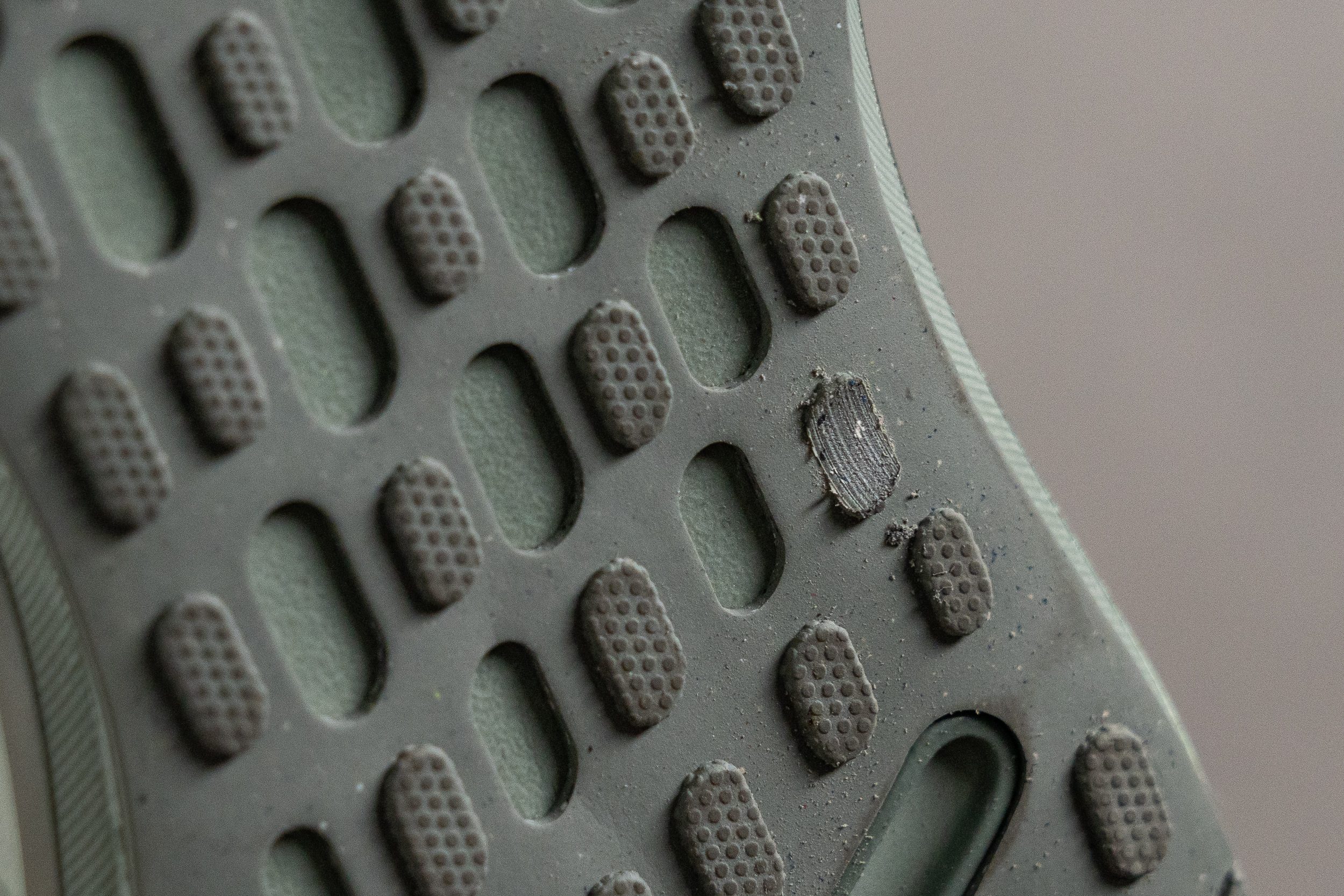
| Journey Run | 1.1 mm |
| Average | 1.1 mm |
Outsole thickness
We discovered that Nike equipped the Journey Run with just 2.9 mm of rubber, which is on the thinner side compared to other daily trainers, but seems sufficient.

| Journey Run | 2.9 mm |
| Average | 3.2 mm |
Misc
Insole thickness
We found the insole a bit thinner than expected, measuring just 3.9 mm.
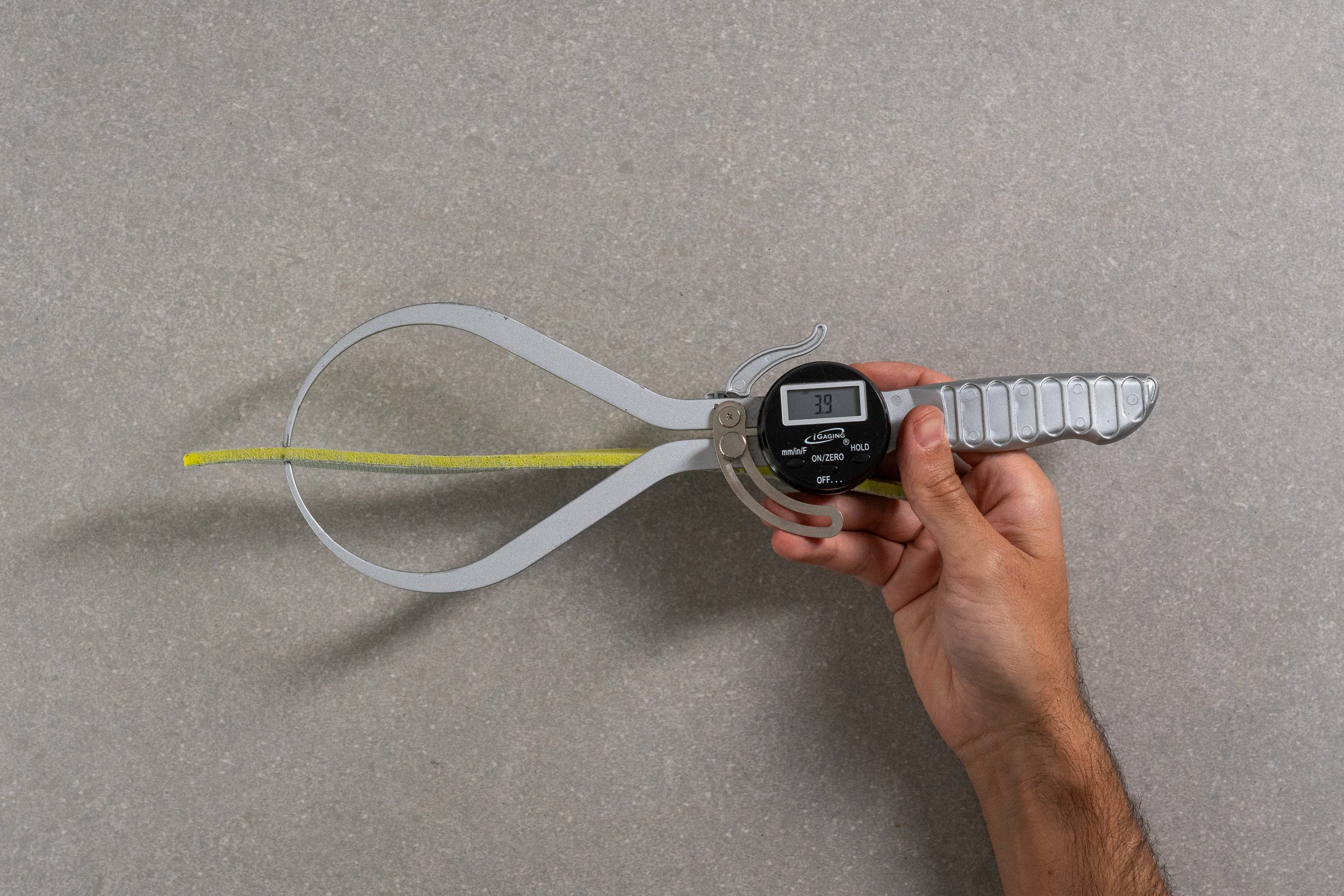
| Journey Run | 3.9 mm |
| Average | 4.5 mm |
Removable insole
We had no trouble removing the insole of the Journey Run. In fact, replacing it might be a good idea, as we found it to be quite basic and low-quality, offering minimal cushioning.
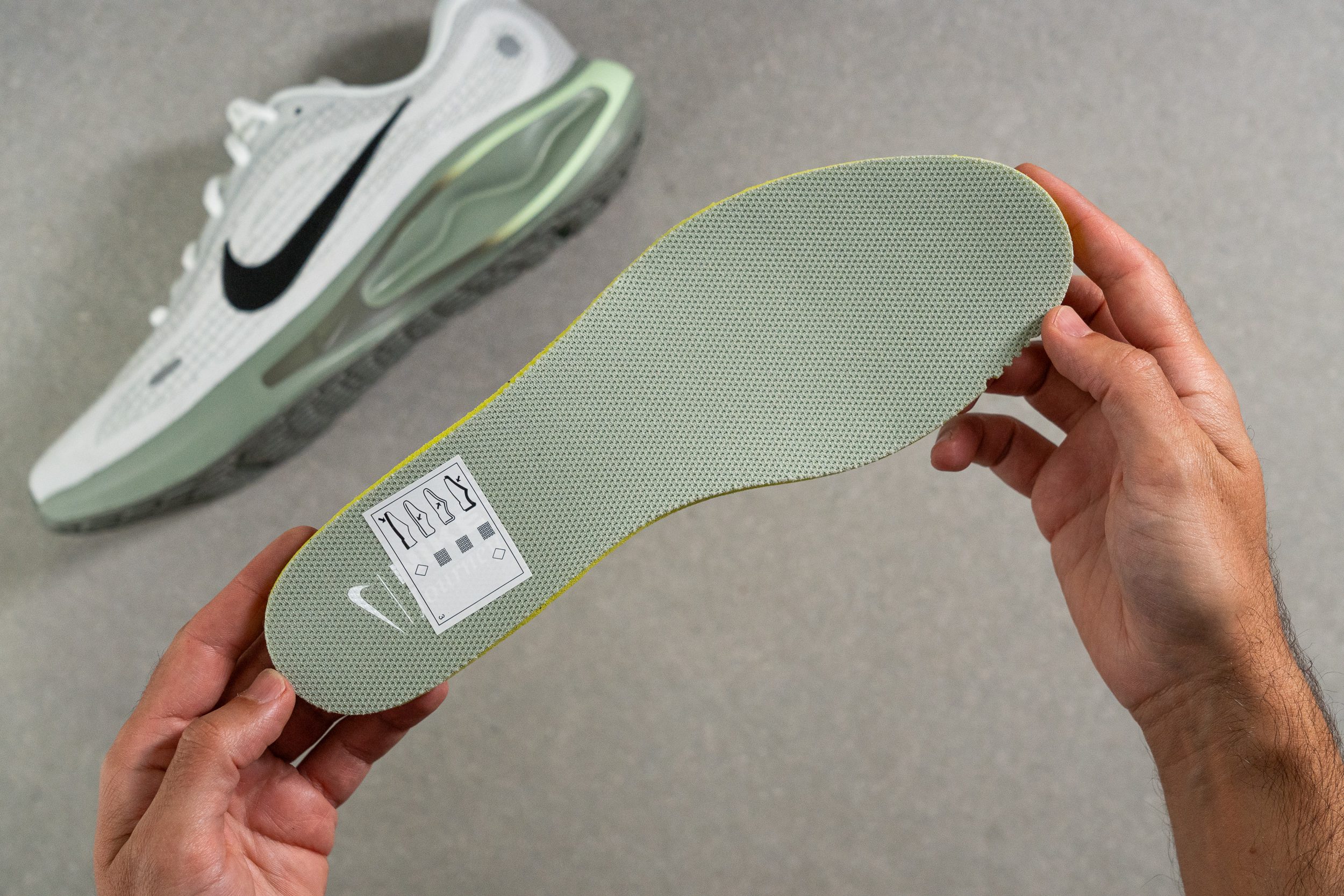
| Journey Run | Yes |
Midsole softness in cold (%)
Since the midsole is EVA-based, it was no surprise to us when it became significantly firmer after spending 20 minutes in the freezer.
We tested it again and found a staggering 42.6% uptick. In our view, that’s far too much of a change—clearly highlighting EVA's sensitivity to colder temperatures.

| Journey Run | 43% |
| Average | 24% |
Reflective elements
We found it a pleasant surprise to see reflective elements in the Journey Run—especially since Nike often skips them, even in higher-priced models. This extra feature boosts safety for runners who prefer evening or nighttime runs.
| Journey Run | Yes |
Tongue padding
If you’re one of those runners who love to tighten the laces as much as possible, we discovered that the Journey Run is a perfect match for you.
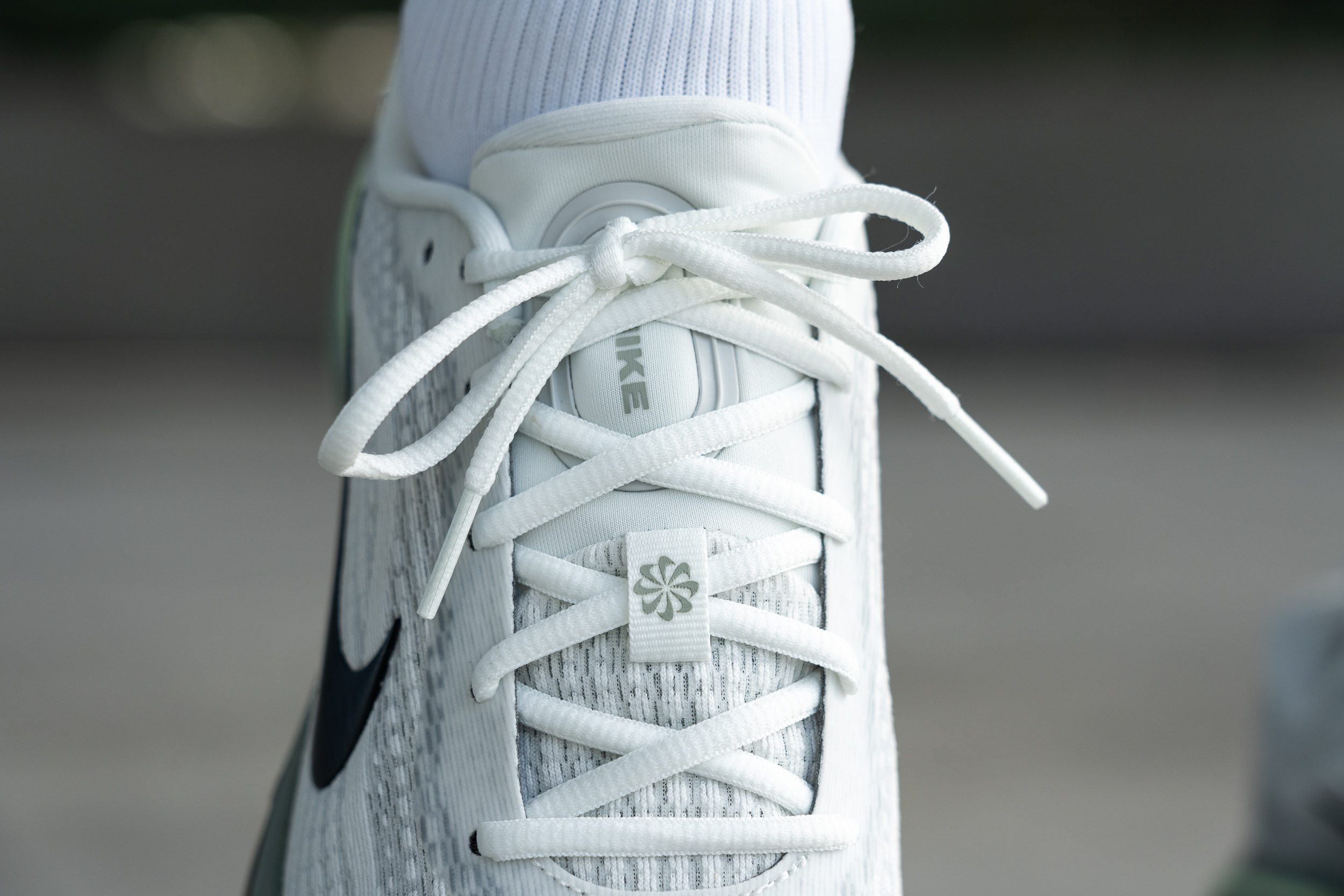
With 13.2 mm of foam between your instep and the top of the tongue, it’s one of the most cushioned designs we’ve measured.
However, there’s a clever trick—Nike placed a thick slab of padding only where the knot tightens, leaving the rest of the tongue thinner. This strategic cushioning keeps comfort high and weight low by focusing padding exactly where it matters most. That's amazing because this is a value-oriented shoe!
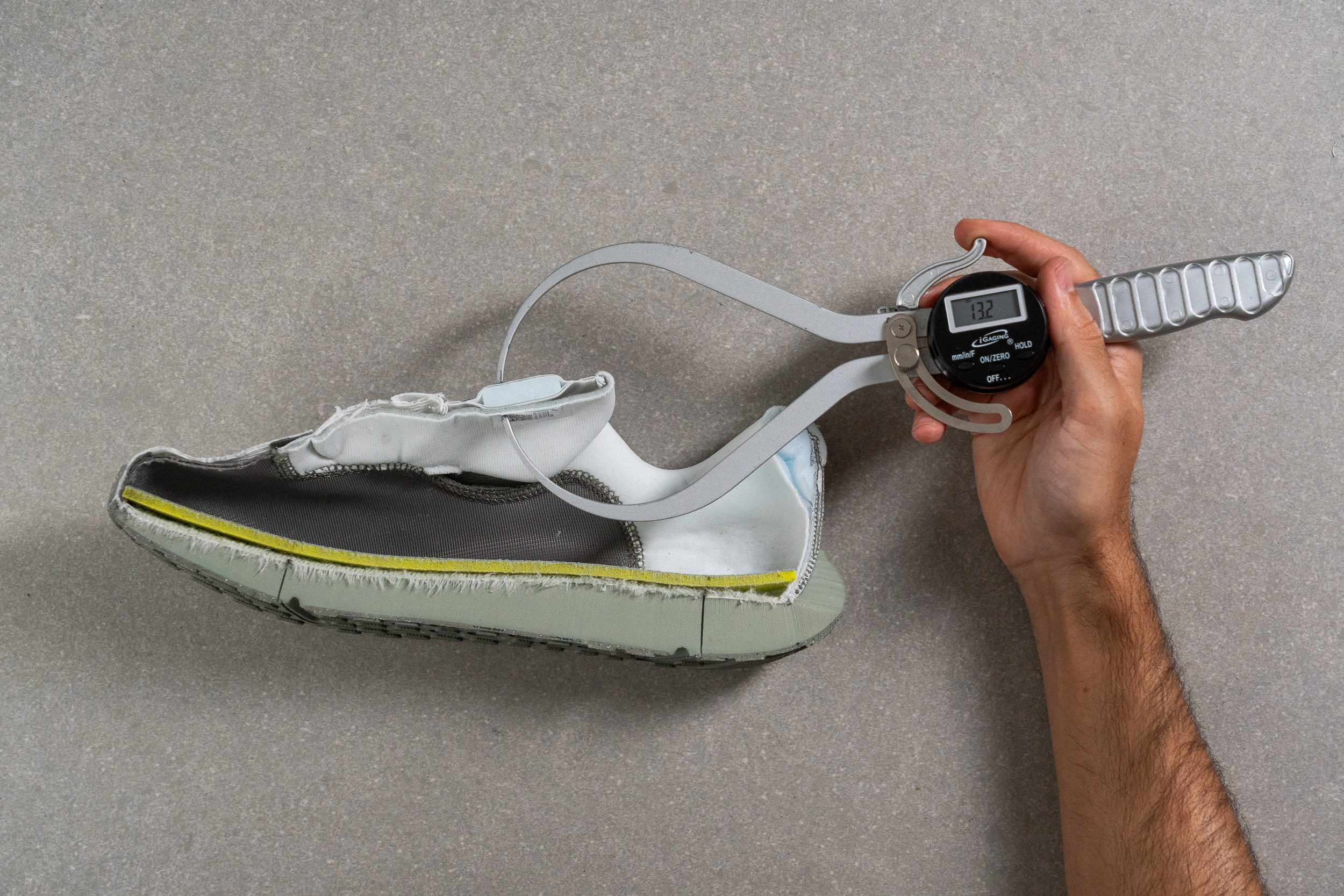
| Journey Run | 13.2 mm |
| Average | 5.8 mm |
Tongue: gusset type
It’s rare to find a running shoe under the $100 mark with a tongue secured to the sides, which is why we were both happy and surprised to discover a semi-gusseted tongue in the Journey Run.

| Journey Run | Both sides (semi) |
Price
We believe the Nike Journey Run is fairly priced. At less than half the cost of the Nike Invincible 3, it offers much better value—especially for beginners and those not planning long runs. However, as with any budget-friendly shoe, a lower price tag inevitably brings compromises in energy return and material quality.
| Journey Run | $90 |
| Average | $152 |
Heel tab
The Journey Run heel lacks a finger-loop tab, but we found that Nike extended the heel collar cushioning in this area, creating a soft and cozy running experience—especially beneficial for those with sensitivities in this part.
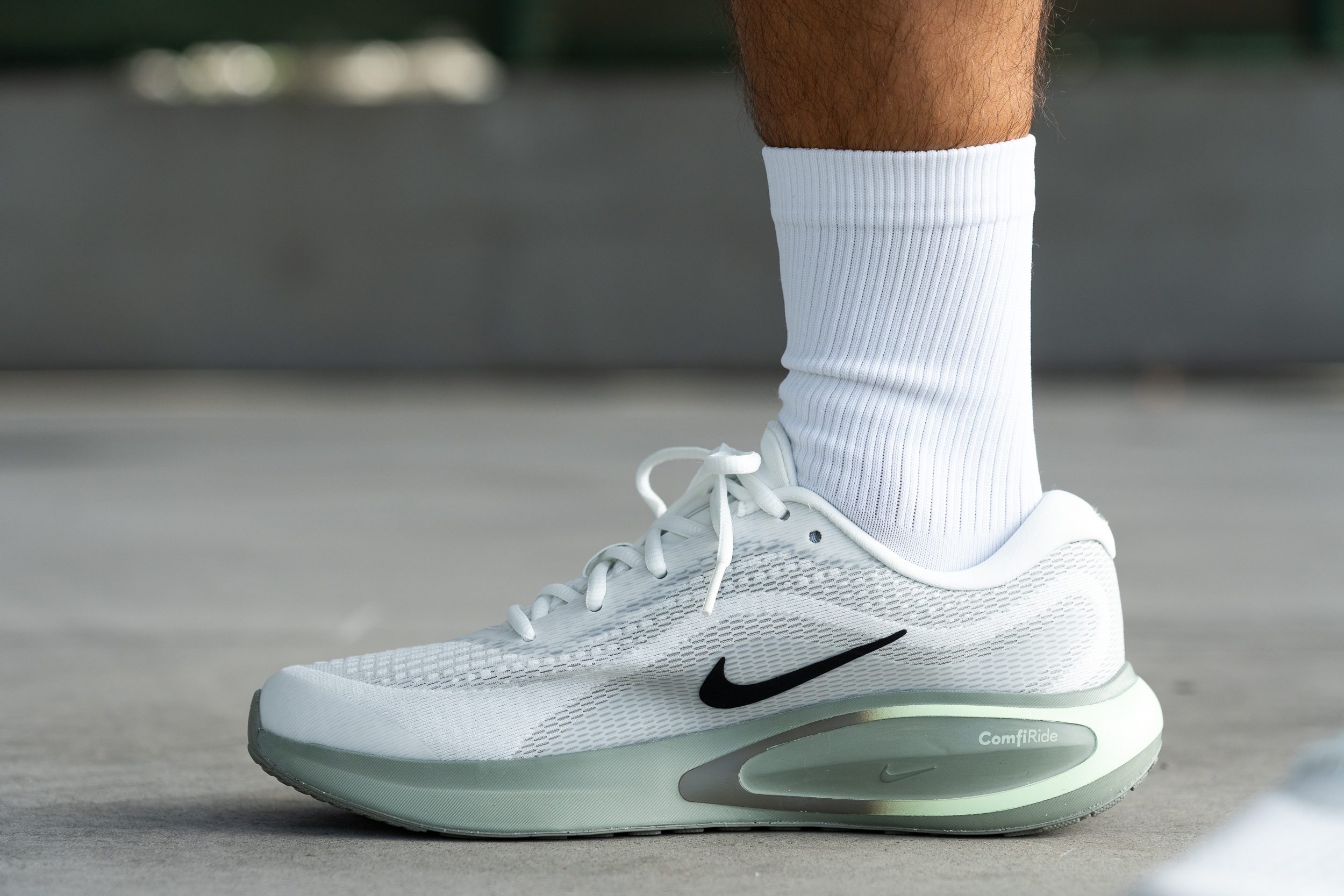
| Journey Run | None |

